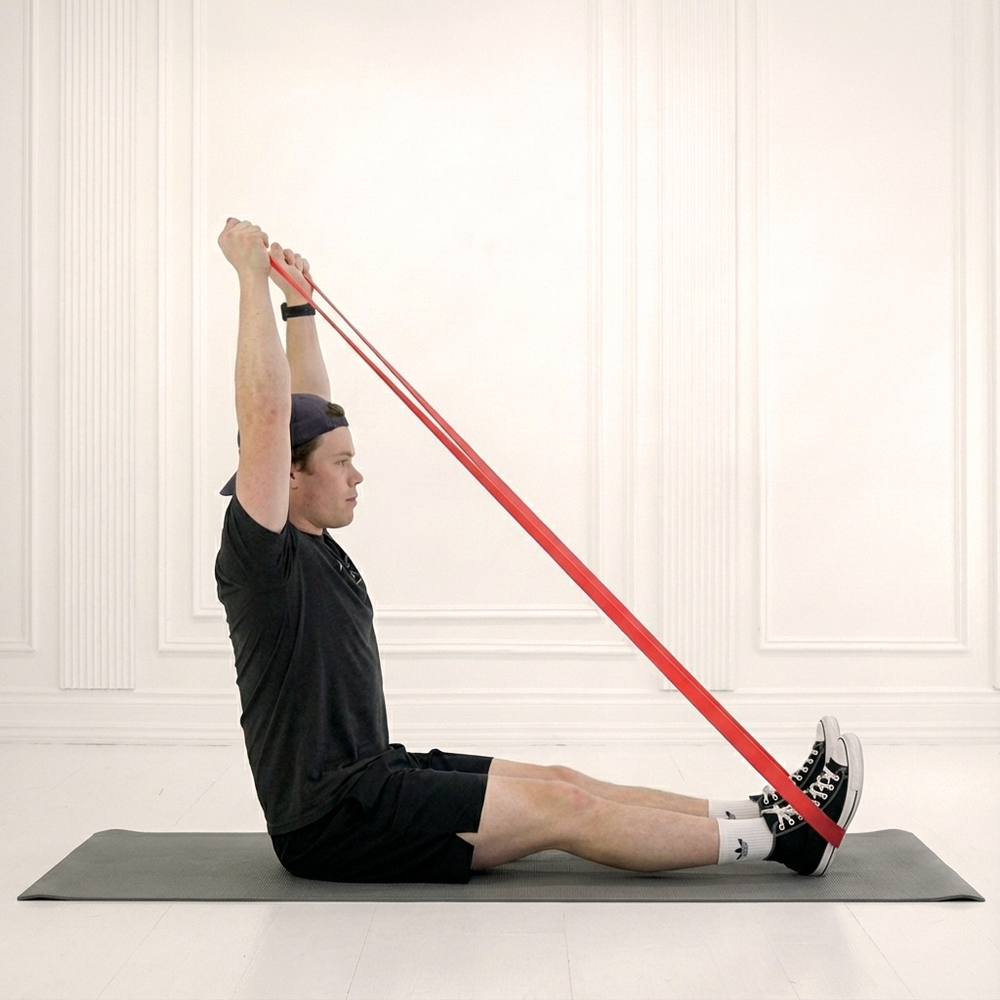
Video Coming Soon
We're working on adding video demonstrations for this exercise.
Resistance Band Y-Raise
A resistance band pull targeting lower traps, rear delts, and rhomboids to enhance shoulder stability and posture; used for upper back strength and injury prevention in rehab or general fitness.
About Exercise
Equipment
Bands
Difficulty
2/5 • Beginner
Primary Muscle Groups
Traps, Shoulders
Secondary Muscles
Lats
Popularity Score
6
Goals
Training Style
Setup Requirements
Requires Rack
No
Requires Bench
No
Requires Spotter
No
Space Needed
Small
Noise Level
Low
Muscle Breakdown
View Muscle MapTraps
9/10Lower Traps, Mid Traps
Shoulders
8/10Rear Delts
Lats
4/10Programming
Typical Rep Range
10-15 reps
Rest Between Sets
30-60 seconds
How to Perform
Anchor a light to moderate resistance band at waist height to a stable point like a door or rack. Stand facing away with feet shoulder-width apart, holding ends with arms straight and angled downward, thumbs up.
- Pull shoulder blades down and back.
- Raise arms upward and outward into a Y shape.
- Keep arms straight with slight elbow bend.
- Hold top position briefly, squeezing upper back.
- Lower arms slowly to start, maintaining band tension.
Coaching Tips
Form Cues
- Blades down and back
- Thumbs lead the raise
- Core tight, ribs down
- No shoulder shrug
Breathing
Inhale as you lower your arms; exhale as you raise into the Y position while bracing your core.
Tempo
2-1-2
Range of Motion
From arms angled downward to forming a Y overhead, with hands slightly behind head and arms at 45 degrees to torso.
Safety
Safety Notes
- Inspect band for damage before use
- Use light band to maintain form
- Stop if sharp shoulder pain occurs
- Secure anchor firmly
Spotting
Spotting not required; self-spot with lighter band or partial range if needed.
Common Mistakes
- Shrugging shoulders up
- Arching lower back
- Bending elbows excessively
- Releasing tension on return
When to Avoid
- Acute shoulder impingement
- Neck strain
- Recent rotator cuff injury
Flexibility Needed
- Shoulder flexion to 150 degrees
- Thoracic extension
Build Up First
- Basic scapular retraction control
- Proper posture awareness
Also known as
Band Y Raise, Banded Y Raise, Standing Band Y Raise
Found this helpful?
Share your thoughts or help us improve this guide.
Similar Exercises

Resistance Band Y-Fly
Bands
Shoulders

Resistance Band Front Raise
Bands
Shoulders

Resistance Band Lateral Raise
Bands
Shoulders

Resistance Band Lateral Raise
Bands
Shoulders

Resistance Band Shrug
Bands
Traps

Resistance Band Underhand Front Raise
Bands
Shoulders

Resistance Band Face Pull
Bands
Shoulders

Resistance Band Pull Apart

Bands
Traps

Resistance Band Upright Row
Bands
Shoulders

Resistance Band Rear Delt Fly
Bands
Shoulders


subscribe to our newsletter
Contact Us
hello@trainfitness.aiFind Us
130 Spadina Avenue, Toronto,
Ontario, M5V 0H4, Canada
©2025 All Rights Reserved
